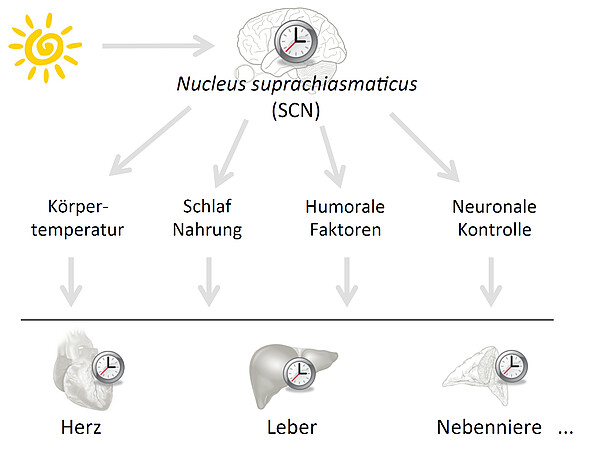Overview

Life on our planet is heavily influenced by the Earth's rotation around its axis and, by this, the regular succession of night and day. To stay adapted to daily changes in environmental conditions most species - from cyanobacteria to humans - have evolved inner, so called "circadian clocks" (from circa diem (Lat.) - around the day). These enable the organism to reliably estimate daytime even in the absence of external cues. Such clocks are found in all tissue and cells of our body. The interplay of this clock network directs 24-hour rhythms in physiology and behavior.
Disruption of natural circadian rhythms as during jetlag or shift work can impact on health and well-being. Shift workers have an increased risk for developing a large number of chronic disorders - from obesity and diabetes to heart attacks and even cancer.
In our lab we study the mechanisms and effects of circadian timekeeping in mice and men. We are focused on three main questions:
- How are the circadian clocks synchronised to external time?
- How is time information transmitted from the central clock in the SCN to peripheral tissues?
- How do cellular clocks coordinate physiological processes?
To address these questions we use behavioural, physiological, molecular biological and (mouse) genetic experimental approaches.









